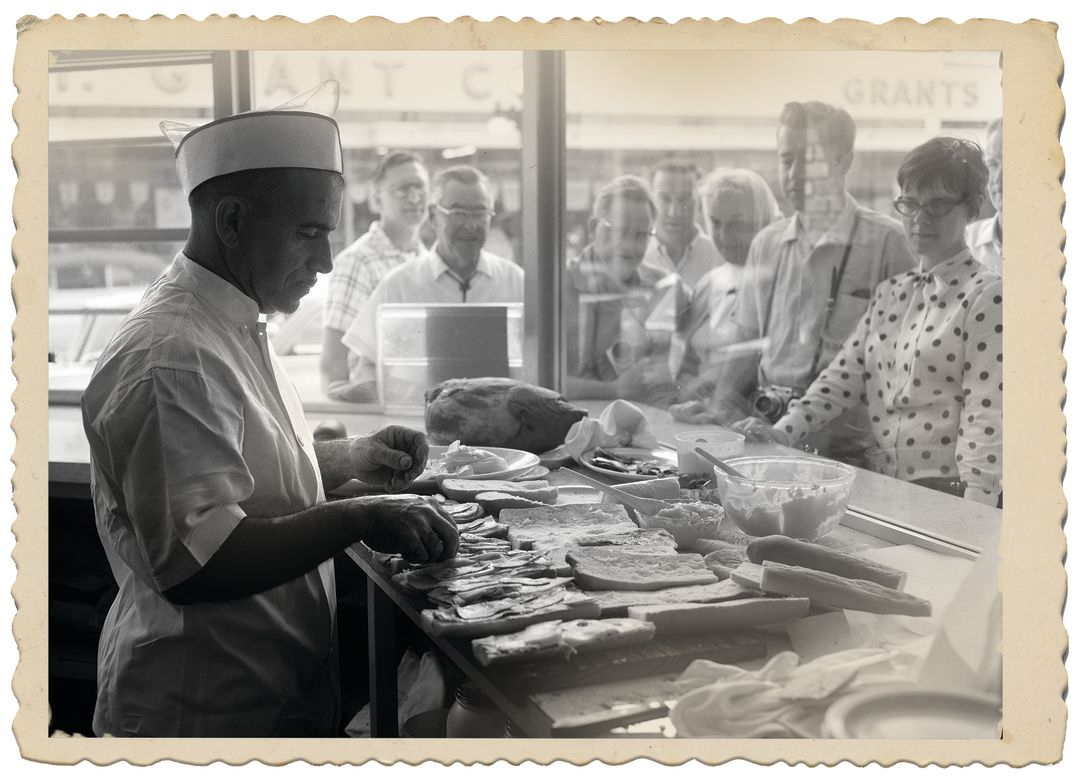The Real History of the Cuban Sandwich

Making Cuban sandwiches in Ybor City, 1966
Image: Shutterstock
Fidel Castro, the cha-cha-cha and Cohiba cigars come from Cuba. The Cuban sandwich? Not so much. As far as the name goes, it’s in a class with London broil, which doesn’t come from England, and the Jerusalem artichoke, which doesn’t come from the Holy Land. The “Cuban,” as it’s familiarly known, has roots just up the road, in Ybor City.
According to oral tradition, either the Columbia Restaurant or one of the smaller cafeterias in the neighborhood first served the sandwich more than a century ago. Back then it was made with pork, ham, turkey, Genoa salami, Swiss cheese, sour pickle slices and mustard on a long loaf of white bread. It served as lunch for thousands of immigrant Cuban cigar workers and other Spanish, Italian and Jewish immigrants drawn to the city. Spanish speakers called it a mixto, because of the mixed meats. English speakers called it a Cuban, because that’s who they saw eating it.
Most Cubans who still live in Cuba have never experienced the satisfaction of a Cuban sandwich. I lived with a family there for several months in the mid- to late-’90s, during one of the country’s worst economic crises, when nearly everyone had to barter with neighbors to scrape together enough food for a meager meal. For most people on the island today, food remains scarce and of poor quality, and is rationed by the government, while in America, you can find a Cuban sandwich almost anywhere, from a corner gas station to a trendy Manhattan restaurant.
Lovers of the sandwich disagree over what should be in it. They quarrel over whether it should be served cold or pressed on a hot plancha. (One longtime Ybor City resident says the only thing they pressed in his day were pants.) They argue over whether Miami or Tampa has the best sandwich. No one argues about the bread. It has to be Cuban—yeast-risen and enriched with a little fat (traditionally lard). It’s long, white and soft on the inside, with a light, crispy crust.
To make one on your own, butter half the loaf and cover the other with yellow mustard, layer on sliced, slow-roasted pork, thinly sliced Serrano ham, Swiss cheese and dill pickles and you’ve got the real McCastro. In Tampa, they still use Genoa salami, but not turkey. In Miami, they hold the salami, forget the turkey and press the sandwich. Don’t expect lettuce, tomatoes or mayo. That amounts to yanqui imperialism.
If the savory lure or lore of the Cuban calls you, try the Columbia Restaurant on St. Armands Circle, the Corkscrew Deli on the South Trail, downtown’s Cafe in the Park or, for the feel of an old school Cuban cafeteria, Rincon Cubano, at the intersection of Honore Avenue and 17th Street.
London broil and the Jerusalem artichoke, by the way, are native to North America. They’re as American as, say, the Cuban sandwich.



